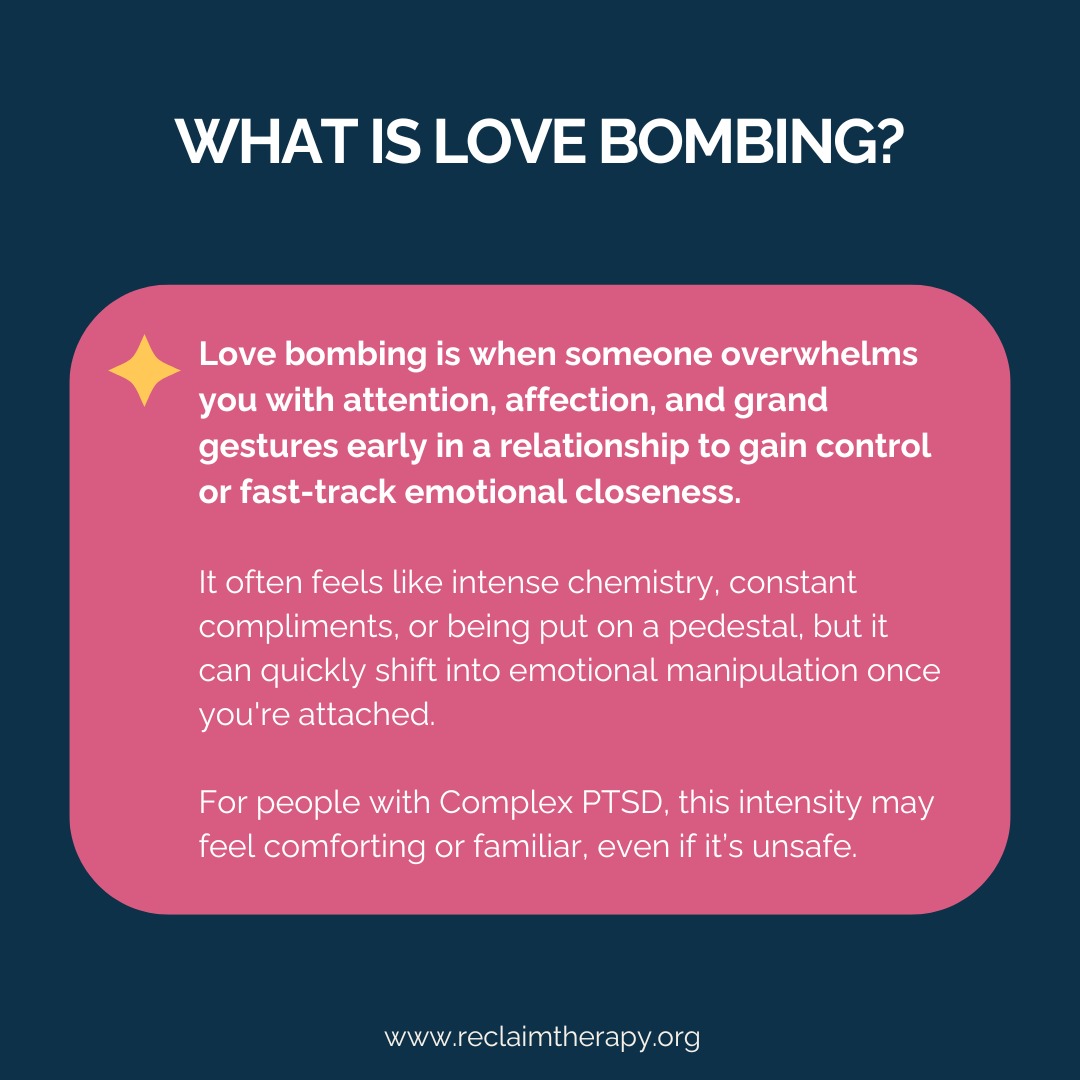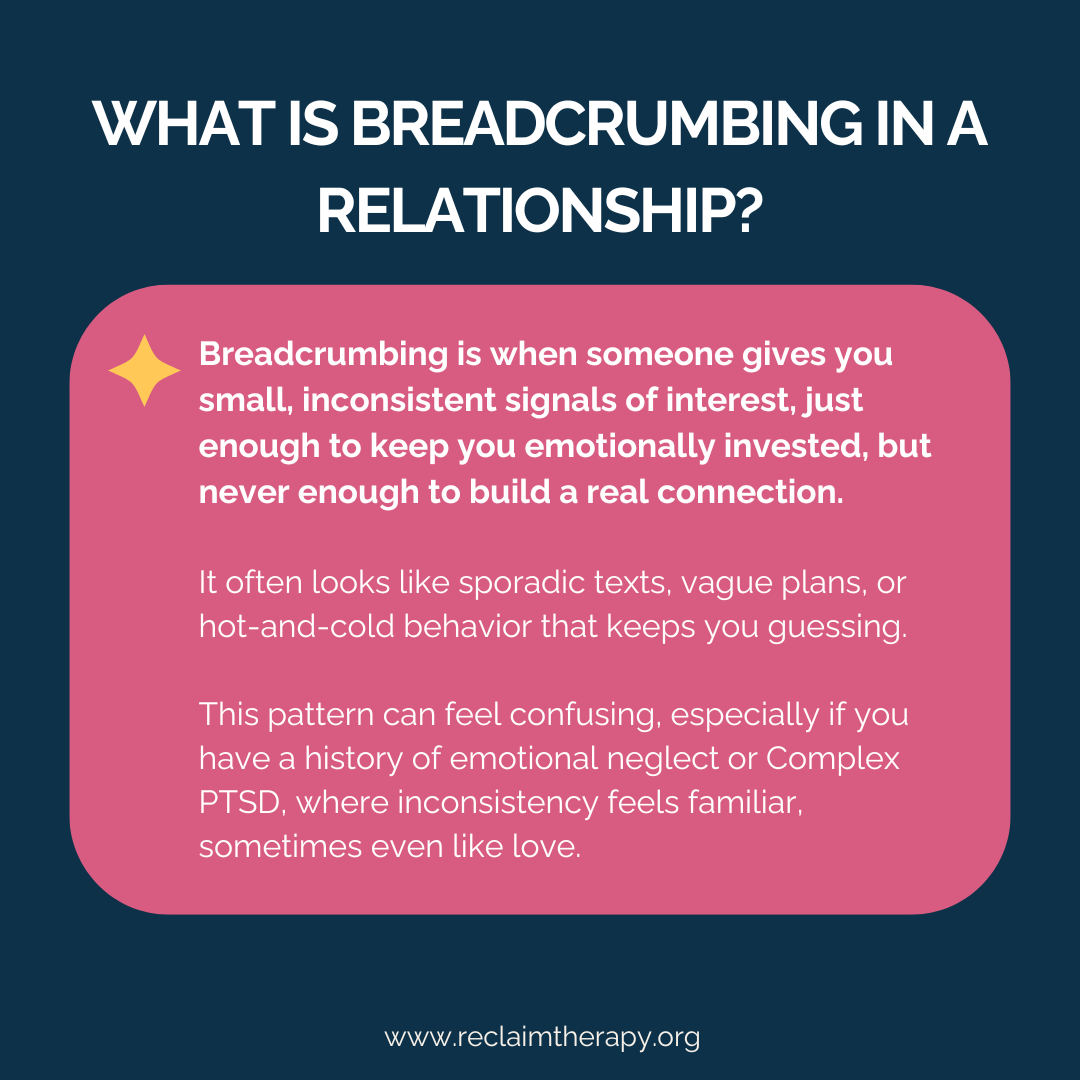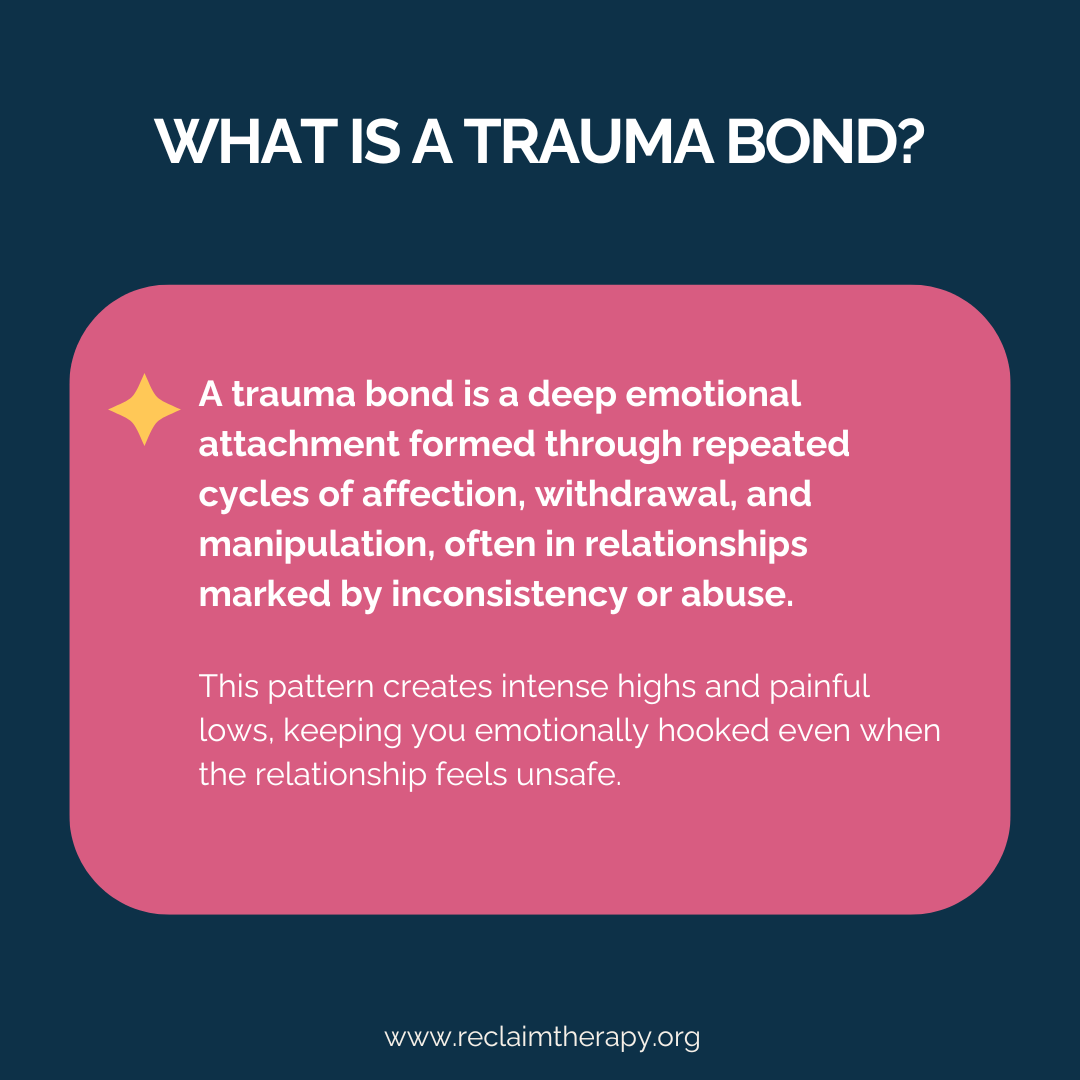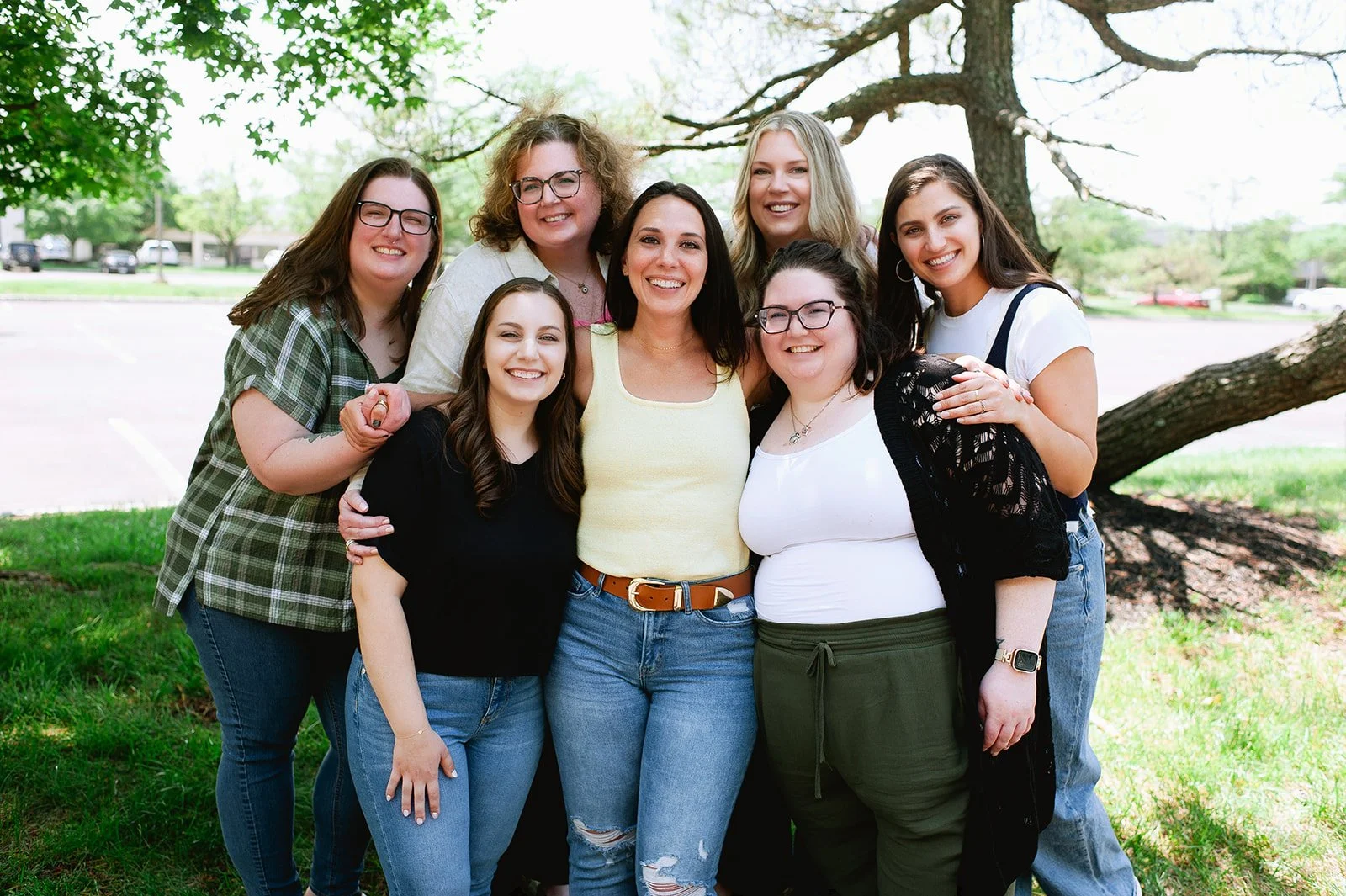The Cycle of Love Bombing, Breadcrumbing and Trauma Bonding
You know that kind of relationship that feels electric at first?
The one that sweeps you up, makes you feel chosen, alive, like maybe this time, finally, you’ve found something real?
But then, almost without warning, it shifts.
The warmth cools.
The attention fades.
And, you’re left holding the thread, trying to make sense of what just happened.
You start replaying texts. Reanalyzing tone. Wondering if you were too much… or not enough.
And yeah, maybe part of you feels embarrassed for caring this much. For still hoping.
But let’s be clear for a minute… this isn’t about being clingy, needy or dramatic.
Many people who find themselves caught in this pattern again and again often have a history of Complex Trauma.
When you’ve grown up around emotional inconsistency, or with love that felt like something you had to earn, your system learns to equate intensity with intimacy. It wires you to chase crumbs, to cling to connection, to second-guess yourself every step of the way.
That drop in your stomach when they pull away?
That’s recognition. Your body remembers.
Love bombing. Breadcrumbing. Trauma bonding. These aren’t just internet buzzwords.
They’re real, painful patterns, especially for folks living with complex trauma.
And if you’ve found yourself caught in that push-pull cycle, there’s nothing wrong with you.
You’re not imagining it. You’re responding to something real.
Let’s get into it.
What Is Love Bombing?
Love bombing is the part that feels so good.
At first at least.
It looks like someone sweeping you off your feet with affection, attention, big gestures, and constant texts. You feel like you’re finally being seen. Like maybe all the garbage relationships you went through were worth it because this feels different.
But then…
The pedestal starts to wobble.
The sweet texts slow down. The attention fades.
The same person who once made you feel like the most important person in the room starts pulling away. You go from “I can’t stop thinking about you” to silence.
This isn’t love. It’s a trapdoor.
And when you’ve spent a lifetime craving consistent care and connection, this kind of over-the-top attention can hook you fast.
The nervous system doesn’t necessarily know what’s real.
It just knows: Finally, I feel wanted.
What Is Breadcrumbing?
Breadcrumbing is what often follows the love bomb. And honestly? It’s a mind game, whether the other person realizes it or not.
Breadcrumbing is that on-again-off-again energy. Just enough attention to keep you holding on… but never enough to feel safe or secure.
A text here and there.
Promises that never materialize.
Emotional availability that’s inconsistent at best.
You start to feel like you're begging for scraps of connection. Like you’re constantly questioning yourself, Did I say too much? Not enough? Should I just wait it out?
It feels like you're the problem. But breadcrumbing works precisely because it mimics just enough of the connection your nervous system craves, without ever delivering the safety it needs.
What Is a Trauma Bond?
A trauma bond is a deep emotional attachment formed through cycles of intensity and withdrawal, reinforced by unpredictability.
The brain actually lights up from the highs and plummets during the lows. Your system gets wired to seek resolution, to chase closeness, to try harder… because the disconnection feels like danger.
And when that person finally reaches back out? Dopamine spikes. Your body says relief. This must be love.
But it’s not love. It’s a survival response.
This is very common for people living with Complex PTSD, especially those whose early relationships were marked by emotional neglect.
Maybe the adults in your life met your basic needs but couldn’t meet your emotional ones. Maybe no one named your feelings, helped you process pain, or modeled safe connection. So now, your system doesn’t just want closeness, it’s scanning for it like it’s oxygen.
How Love Bombing, Breadcrumbing, and Trauma Bonding Work Together
These three patterns don’t happen in isolation—they feed each other in a loop that can be incredibly hard to break.
It often starts with love bombing: intense attention, fast connection, and overwhelming closeness that feels like finally being chosen. Then comes the drop-off—breadcrumbing—where the affection turns inconsistent, distant, confusing.
That push-pull dynamic lays the foundation for trauma bonding: the emotional addiction to the cycle itself. The highs feel euphoric. The lows feel devastating. And the unpredictability keeps you hooked, always hoping the warmth will return if you just try harder, stay longer, be better.
Why CPTSD Makes These Patterns So Easy to Fall Into
Because this kind of chaos? It’s familiar.
Especially if you grew up with emotional neglect, where no one yelled, but no one really saw you either.
Where your needs went unnoticed, your feelings went unmirrored, and love felt like something you had to earn by shrinking.
It’s quiet. Often invisible. But its impact lives on, shaping your nervous system, your relationships, your sense of worth.
Your body already knows what it’s like to scan the room for shifts. To work for attention. To become whoever you think you need to be in order to stay connected.
When love has always felt just out of reach, the highs and lows of these relationships don’t just feel normal—they feel like home.
That ache you feel when you’re dismissed or disregarded? It’s not new. It’s practiced.
But here’s what matters:
Familiar doesn’t mean safe.
And it doesn’t mean this is the kind of love your system is meant to settle for.
If these patterns hit close to home, you might also want to read How Childhood Emotional Neglect Can Show Up in Adulthood. It offers a deeper look at how early relational wounds shape the way we seek out (and sometimes settle for) connection.
Signs You Might Be Stuck in a Trauma Bond
You don’t have to check every box, but if these resonate? It’s worth paying attention.
You feel anxious or preoccupied with the relationship.
You keep justifying their behavior—even when it hurts you.
You feel a deep pull to stay, even though you’re exhausted.
You’re caught in an on-again, off-again loop that leaves you numb or panicked.
You don’t feel like yourself anymore.
Trauma bonds don’t form because you’re too sensitive or bad at boundaries. They form because your system is still trying to make sense of relationships that never felt safe, steady, or secure to begin with.
How to Accept Love as a CPTSD Survivor explores what it actually looks like to let love in, especially when your nervous system is bracing for loss or betrayal.
How to Start Unhooking from a Trauma Bond
Getting out of these cycles isn’t just about blocking someone’s number or giving yourself a pep talk in the mirror. It’s about gently untangling a survival strategy that your nervous system learned for a reason.
The goal isn’t to cut off emotion. It’s to build the capacity to stay connected to yourself—even when your old patterns flare up.
Here are five tools to help you begin:
→1. Name what’s happening (without self-blame).
When you feel that deep ache to reach out, to fix it, to hold onto the scraps, it’s not weakness. It’s a patterned survival response.
Try saying to yourself:
“Something in me is reacting from an old place. I don’t need to shame it, I just need to notice it and care for it if I can.”
This kind of gentle awareness creates just enough space to choose differently.
→2. Regulate your body before you analyze the relationship.
Before you try to journal your way to clarity or rehearse a conversation in your head, pause.
Get back into your body first.
Try:
Orienting: Slowly look around the room. Name 5 things you see.
Grounding: Press your feet into the floor. Feel the texture, the pressure.
Temperature shifts: Hold something cold or warm. Let your body track that sensation.
These small, physical cues help your system shift out of survival mode, so your thinking brain can come back online.
→3. Create micro-moments of safety and connection.
Instead of trying to overhaul your life overnight, focus on what’s already available.
Ask: Where in my day can I feel even 10% more settled?
Try:
Spending time with someone who feels emotionally steady.
Returning to a familiar café, walking route, or space that feels predictable.
Choosing a daily anchor. Tea, music, movement, sunlight… anything that signals safety to your body.
These moments might feel small, but they start to build a new baseline: one where connection doesn’t require chaos.
→4. Reconnect to your values, not just your fears.
Trauma bonds keep you locked in fear: fear of abandonment, fear of being alone, fear of messing up.
Instead, try asking:
What kind of love do I want to grow into?
What does respect feel like in my body?
What kind of relationship helps me feel like me, not a version of me I perform to keep someone close?
Let your values, not your fear, guide your next small step.
→5. Get support that’s truly trauma-informed.
You don’t have to untangle this all alone.
Sometimes the most powerful thing you can do is have someone with you as you learn what safety actually feels like.
Whether it’s working with a trauma therapist, joining a support group, or learning somatic tools that help you reconnect to your body, you deserve support that honors the depth of what you’ve lived through.
And, if you’ve been in a relationship where manipulation, control, or emotional harm were present, you may be navigating a lot more than just confusion, you might be in recovery from narcissistic abuse.
How to Heal From Narcissistic Abuse offers gentle guidance and next steps for untangling that kind of pain.
This Isn’t About Who You Are. It’s What You’ve Lived Through.
If you’re noticing yourself in these patterns, if you’re reading this with a pit in your stomach or a lump in your throat, I want to say this gently but clearly:
It makes sense that it’s been hard to trust your gut. It makes sense that part of you still holds on when someone shows you even the smallest sign of care.
That doesn’t mean something is wrong with you. It means you learned how to survive.
And now, you’re starting to outgrow those survival strategies.
That’s the work. Not forcing yourself to be “unbothered.” But, learning what safety actually feels like… in your body, in your choices, in your relationships.
If you’re standing in that in-between place, where you’re not sure whether to stay or go, speak up or stay quiet, pause. Take a breath.
Your clarity doesn’t need to be loud. It just needs space to land.
And please remember:
You get to want more than crumbs.
You get to want a love that feels steady.
And you don’t have to settle for anything less.
🧡,
Looking for a trauma therapist that provides specialized therapy for complex trauma or EMDR for complex trauma?
Our team of EMDR Therapists in Horsham, PA provide specialized trauma therapy for survivors of CPTSD, PTSD and narcissitic abuse. We also specialize in providing therapy for eating disorders and body image concerns.






